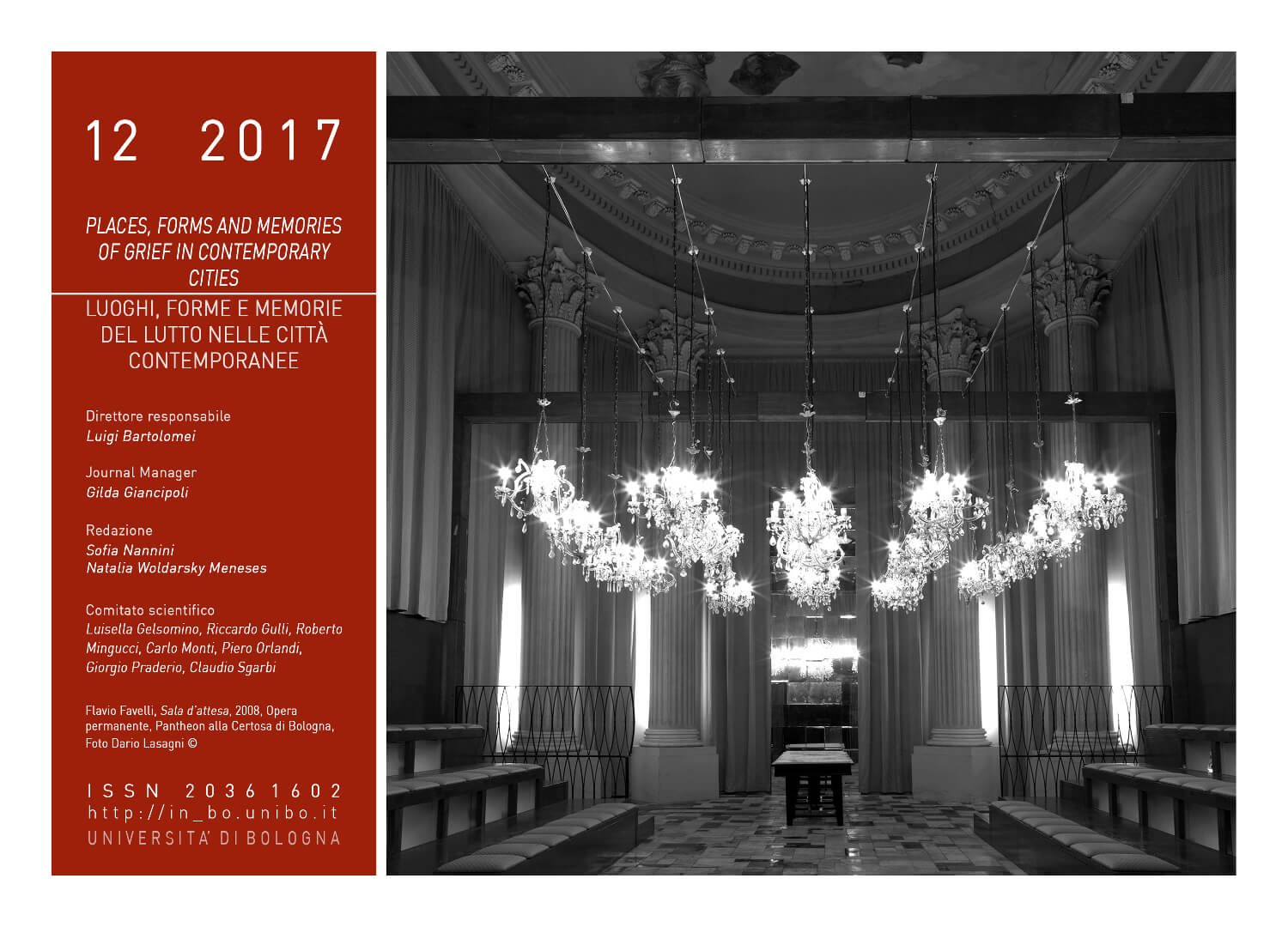Finding solace in grandma’s cooking: architectural storytelling to mourn at home
DOI:
https://doi.org/10.6092/issn.2036-1602/7863Keywords:
Film, Atmosphere, Attunement, Domestic dwelling, Representation, StorytellingAbstract
A familiar set of scenes. A kitchen in a Japanese suburb. A grandmother peels vegetables, while keeping eye and ear on her daughter, who is asking for cooking advice. Time passes. Her grandsons and her son-in-law gather around, open the fridge, drink iced tea. The kitchen is filled with old utensils, hanging pots and pans on the walls. White tiles shine with the morning sun, pouring in right above the sink through the window that looks out to the exterior garden. A central table is used as a gathering surface, where later on, corn kernels will be prepared in tempura. This is a family mourning ritual. They’ve gathered to commemorate the anniversary of the death of the family’s eldest son, they do so by cooking and eating. The grandparental home becomes a sanctuary, a funerary shrine where the act of remembrance unfolds every year. The scene belongs to Hirokazu Kore’eda’s Still Walking (Aruitemo Aruitemo), a director in whose work “death looms over”1, constantly exploring and expressing the axiom that “life is often lived in the shadow of death.”References
Boeri, Stefano. “A House for Sister Nabuko and Her Small Daughters Sachiko and Fumiko.” San Rocco. Venezia, 2010
Boscaljon, Daniel. “Dwelling Beyond Poetry: The Uncanny Houses of Hawthorne and Poe.” Resisting the Place of Belonging: Uncanny Homecomings in Religion, Narrative and the Arts, 2013, 47–59
Kore’eda, Hirokazu. Still Walking (Aruitemo Aruitemo). Japan: Criterion Collection, 2008
Krasner, James. “Doubtful Arms and Phantom Limbs: Literary Portrayals of Embodied Grief.” Pmla 119, no. 2 (2004): 218–32
Merleau-Ponty, Maurice. Phenomenology of Perception. New York, NY: Routledge, 2012
Pérez-Gómez, Alberto. Attunement: Architectural Meaning After the Crisis of Modern Science. Cambridge, Massachusetts: MIT Press, 2016
Sobchack, Vivian. The Address of the Eye. New Jersey, NJ: Princeton University Press, 1992
Voss, Christiane, Inga Pollmann, and Vinzenz Hediger. “Film Experience and the Formation of Illusion : The Spectator as ’ Surrogate Body ’” 50, no. 4 (2016): 136–50
Wada-Marciano, Mitsuyo. “A Dialogue Through Memories: Still Walking.” Film Criticism Vol. 35, no. 2/3 (2011): 110–26
Film References
Kore’eda, Hirokazu. Still Walking (Aruitemo Aruitemo). Japan: Criterion Collection, 2008.Bluray
Kore’eda, Hirokazu. Maboroshi. Japan: New Yorker Video, 2000.DVD
Kore’eda, Hirokazu. Afterlife (Wandafuru Raifu). Japan: New Yorker Video, 2000.DVD
Downloads
Published
How to Cite
Issue
Section
License
Copyright (c) 2018 Jorge Rivera Gutierrez
Copyrights and publishing rights of all the texts on this journal belong to the respective authors without restrictions.
This journal is licensed under a Creative Commons Attribution-NonCommercial 4.0 International License (full legal code).
See also our Open Access Policy.
Metadata
All the metadata of the published material is released in the public domain and may be used by anyone free of charge. This includes references.
Metadata — including references — may be re-used in any medium without prior permission for both not-for-profit and for-profit purposes. We kindly ask users to provide a link to the original metadata record.







